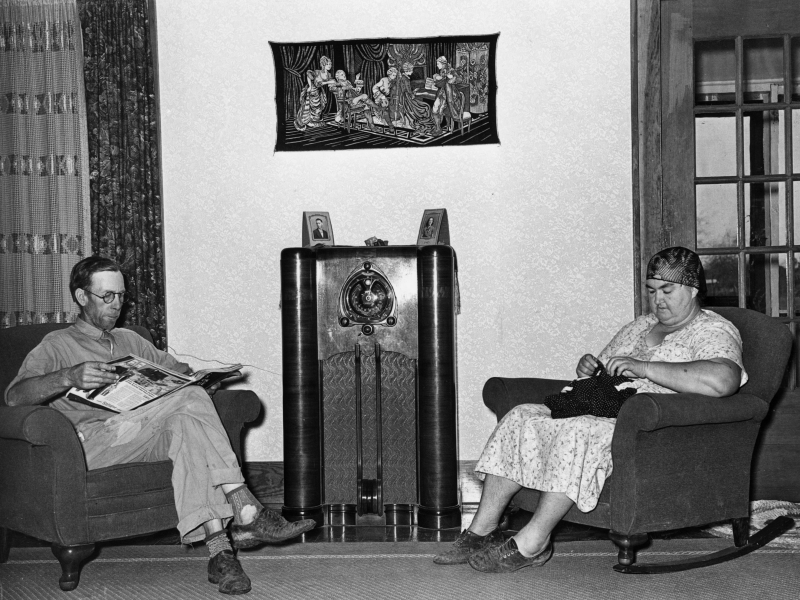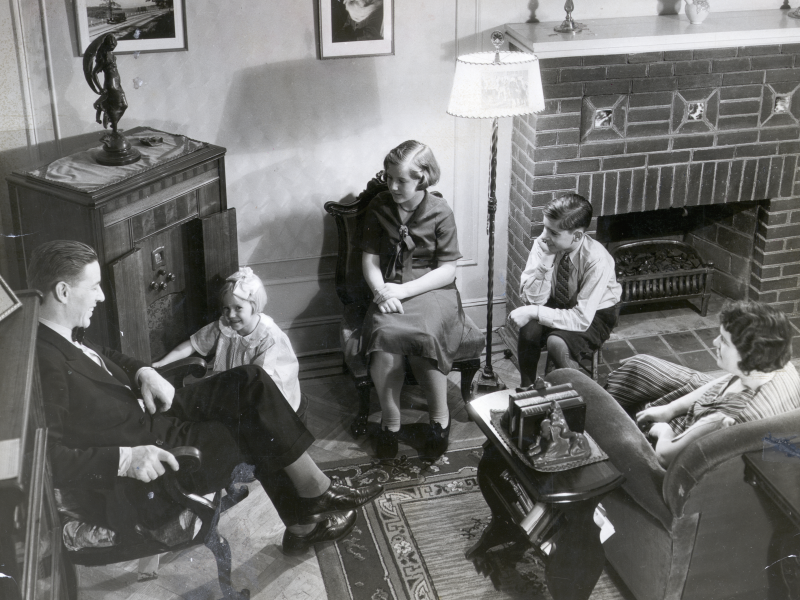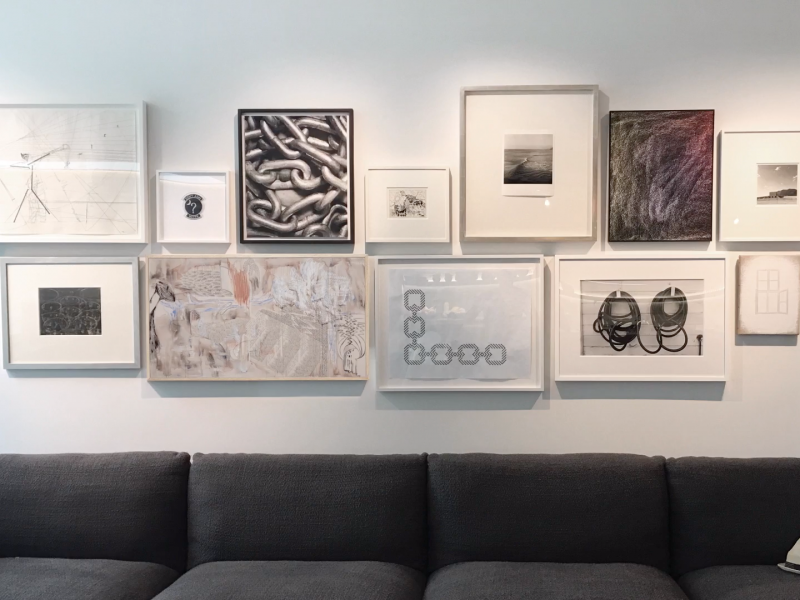- The American living room has seen many changes over the years.
- Big comfy couches weren’t always a necessity, since there was nothing to see – everyone listened to the news on the radio.
- From formal sitting rooms to open concept living spaces, here’s how the American living room has evolved.
The living room is one of the most important rooms in a home. Chances are, you’ll do most of your living there, from watching TV to lounging around to eating some of your meals.
Keep scrolling to see how much living rooms have changed in the US since the 1930s – and maybe even get some home decorating tips.
Before there was a TV to center your furniture around, the focal point of the living room was the radio.

Radios were the main source of news, entertainment, sports – really, everything you get from your TV now.
And since everyone didn’t need a good view, the main furniture were armchairs and coffee tables — couches weren’t so commonplace yet.

Beginning in the ’30s, President Franklin Delano Roosevelt began his “fireside chats,” a series of radio broadcasts in which the president addressed the nation about current events, like the Great Depression or World War II.
Depending on personal taste, the living room could be the site where the entire family hung out, and communicated ...

This is a more informal living space.
Or it could be a more formal "sitting room."

Living rooms also used to be called parlors or parlor rooms.
As we moved into the '50s, the living room became more focused on comfort, and less on formality.

The '50s saw the rise of televisions in homes - and the rise of TV dinners. More and more time was spent in the living room, as opposed to other spots in the house.
Televisions were a far cry from the huge screens we're used to today — sitting up close meant the view was better.

Notice that the parents are still seated on armchairs, and the kids are on the ground. Couches still weren't the staple in every home like they are now.
Truly, sitting more than a few feet away meant that you might not be able to see. Plus, there were no remotes yet, so changing the channel and volume still meant getting up and adjusting them on the TV itself.

Look how thick that television is. Now screens are as thin as 2.57-millimeters.
When the '60s hit, people began getting more adventurous with their decor.

Finally, a giant sectional couch. These are still popular almost six decades later.
The colors and materials are much more rich as well - see the olive green couch and fuchsia pillows. Wood paneling on walls also became popular.
Colorful couches were all the rage.

Animal skin rugs also rose in popularity in the '60s and '70s, as people leaned into campier aesthetics.
As evidenced by shows like "That '70s Show," teenagers began getting relegated to the basement or "rec rooms," which were even less formal than a traditional living room.

The choice of wall decor also reflects the time period. The poster looks psychedelic - the hippie movement of the late '60s was pretty much mainstream by the '70s.
Another telltale sign of the '70s is shag carpeting, which can be seen here.

Shag carpeting is a type of rug that is characterized by its thick and shaggy appearance - hence the name. It's a style that has been around since ancient Greece, but it hit its peak in America during the '60s and '70s.
Floral wallpaper was also a staple of the decade.

Wallpaper might be having a renaissance right now, but as recently as the early 2000s, wallpaper was considered a relic of the '70s.
By the '80s, a television wasn't just for watching — video games were just arriving on the scene.

The video game industry, both home and arcade, experienced a huge boom in the '80s. The Nintendo Entertainment System, or NES, was released in 1985 and quickly became one of the best-selling video game consoles of its time.
However, we're still a long way from the TVs and video games that we know and love today.

First, check out how much space that TV and its unit take up in this room. In 2019, a TV can essentially lay flat against the wall.
Second, that floral couch would most likely not fly in this decade.
The '90s saw more technological invention, and a focus on mixing bold colors and patterns.

Ah, finally. TVs were thin enough to be fixed to the wall. This 1999 living room also boasted a solid home entertainment system.
Primary colors were huge in the '90s - check out the red, blue, and yellow rug, the red posts next to the TV, and the yellow wall on the left.
And yes, video game technology continued to evolve as well.

The Nintendo 64 remains of the best video game consoles of all time. It was released in 1996. In just one year, it sold 3.6 million units.
The early 2000s were all about combining entertainment and practicality, hence the giant media system that held your TV, DVDs, and any other knick knacks you needed to display.

Just 19 years ago, almost every piece of technology took up a huge amount of physical space, instead of existing in the cloud. DVDs and videotapes, photos, your music collection - it all had to sit somewhere.
Giant media centers were the perfect way to solve this problem.
For the past decade, everyone has been knocking down walls so they can have an "open concept" living area, popularized by interior designers like "Fixer Upper" stars Chip and Joanna Gaines.

Open concept is exactly what it sounds like - basically, just have as few walls as possible. The idea is that all your major rooms flow into one another, like the kitchen, living room, and dining room. It helps stimulate conversation, as one person can be cooking in the kitchen, and another sitting on the couch.
To see it in action, take a look at this house designed by open concept queen herself, Joanna Gaines.
And even though TV is still a huge part of our daily lives, we're trying to hide it behind art.

Yup, there's a TV on that wall. The Samsung Frame is one of the newest innovations in television technology. Instead of a black screen, the TV displays art, or personal photos when it's turned off.
Need help? The Frame is in the bottom row, second from the left.
- Read more:
- The worst interior design trends everyone was obsessed with the decade you were born, according to experts
- A popular Instagram account displays the ugliest homes in the world - and the pictures are horrifying
- The most popular home design trend in every state
- Interior designers reveal the biggest mistakes people make when they decorate their homes
